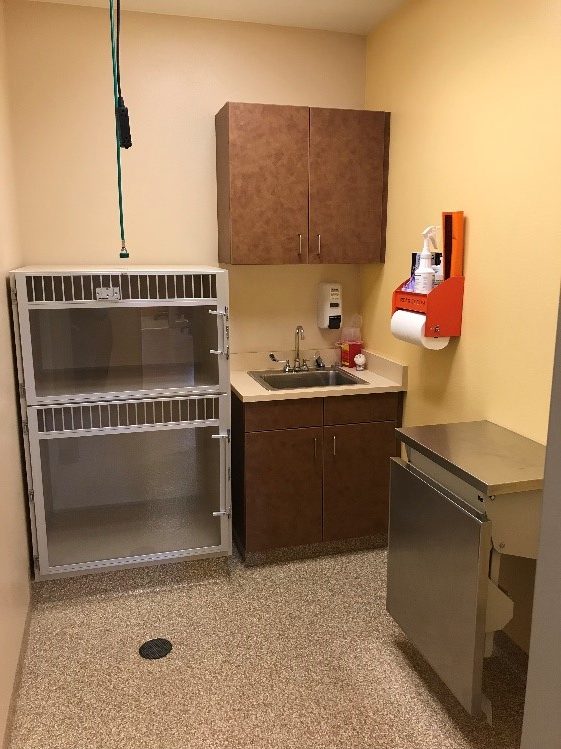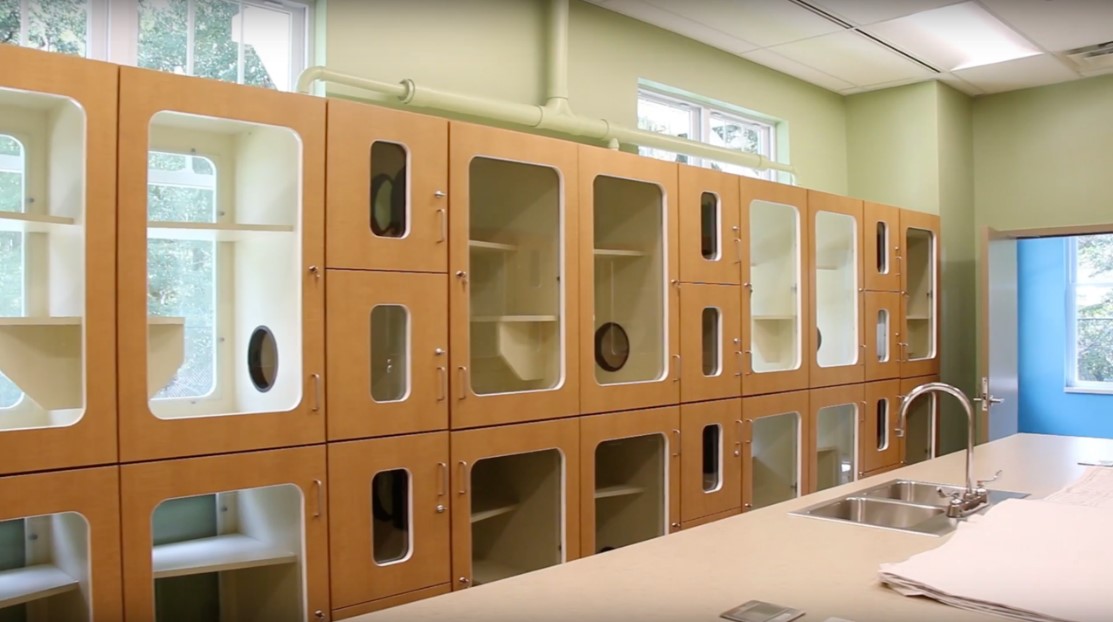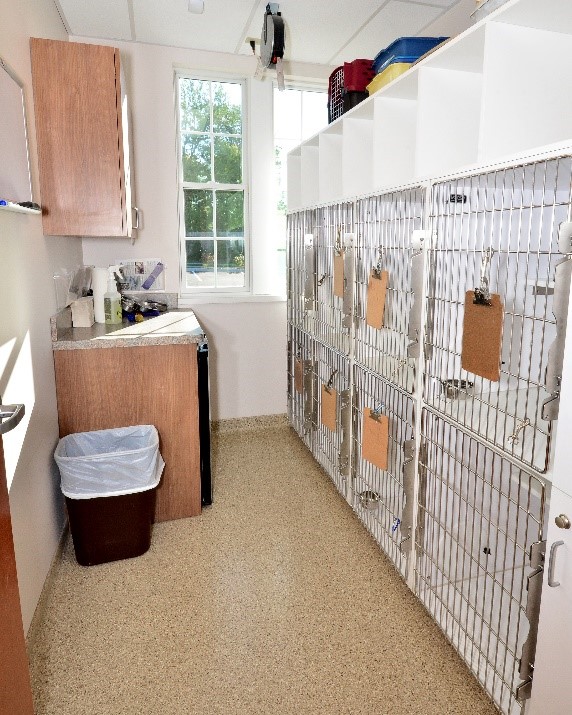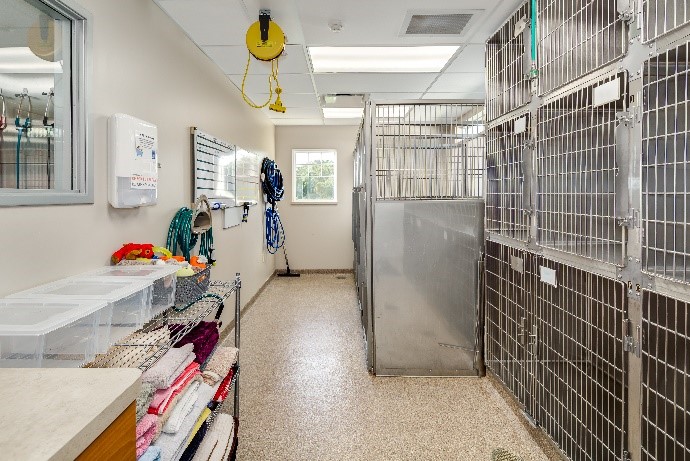Let us start with existing equipment. This can include dog runs, cages, cabinetry, wet table, grooming table, exam tables or even a reused autoclave. It is imperative to coordinate these items with the proposed floor plan early. This helps to avoid space conflicts or electrical outlets in the wrong place late in construction. A lot of these items have standard dimensions across the array of manufacturers, however there are always that one or two that can have odd dimensions. Obtaining the exact sizes of these items is part of the design process. The adage of measure twice, cut once applies here – everything must fit! Regardless if there are existing cut sheets and details, it is best to verify. The design team should have the measurements either acquired by an onsite visit or from the owner; and prior to building framing being completed, the contractor should also verify. It is recommended to have the team sign off on the dimensions and new locations of the relocated items before drywall hanging starts.


One very important thing to note with ordering new equipment is the lead times. The length of time it takes from the order being placed to arrival on site should be understood early in the design process. You would not want to have a new facility without a place to house animals. Some lead times can be up to 14 weeks for equipment after the sign off on the shop drawings. This is important! Everything may be ordered, but the clock does not start until the final approval. Have the collective team sign off on the drawings; not just the owner or architect – but have the contractor verify built walls, note the added mechanical requirements, confirm the drain locations, etc. Review all important visual items with your designer as well: colors, door swings, material types, etc.… The entire team should be copied on all correspondence emails. Make sure everyone is in the know of when the items are being delivered and who is installing them.


Even the most well-intentioned team can miss a coordination item. Be prepared for this possibility and ask the team to help provide multiple solutions / options when challenges arise. Focusing on the details up front and making final selections early will help ensure the process runs smoothly. Maintaining consistent team communication throughout design and construction will provide the most important result – you as a happy client in a highly functioning space!


